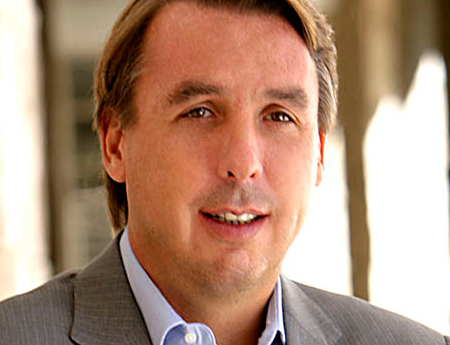Emilio Azcárraga

Related: Inductees Forge Individual Paths To Success
When Emilio Azcárraga became CEO of Televisa in 1997 at age 29, the company was already a media powerhouse in Mexico and one of the world’s largest producers of TV programming. Stars of its telenovelas were not only huge celebrities in Latin America and Mexico, where the company had dominated the broadcast industry for decades, the soaps were also big primetime broadcast hits as far away as Romania and Indonesia.
Closer to home, though, the star power of the Azcárraga media dynasty seemed imperiled. Following the sudden death of Azcárraga’s father, Emilio Azcárraga Milmo, the company was struggling with heavy debts, rising losses and slumping ratings. Many wondered if the 29-year-old had the expertise and experience to steer Televisa through the financial storm.
“We sometimes joke, but I think it is true, that when I came in with my associates, we didn’t understand the size of the problems facing Televisa,” admits Azcárraga, who is now the chairman, CEO and president of the company. “But we always believed that the people and the foundations of the company were very solid…We never thought we were not going to make it.”
Azcárraga and his management team quickly made the obvious moves, cutting costs and selling underperforming assets. But after a painful period of restructuring, they also focused on laying the foundation for the kind of future growth few broadcasters have achieved.
“Emilio took over from his father Emilio Azcárraga Milmo who was a visionary,” with early investments in pay TV and the Hispanic market, says Mark Kaner, president of Twentieth Century Fox Television Distribution, who worked with the Azcárraga family, Globo TV and News Corp. in the 1990s, to create the Sky Latin America DTH service. “But it’s very clear that Emilio Azcárraga has taken that vision to a whole new level.”
One example of that vision is pay TV. In the last 15 years, Televisa has launched 24 pay TV networks that reach nearly 36 million subscribers around the world, while acquiring cable systems in Mexico and expanding its Sky satellite DTH operation, now owned by Televisa (59%) and DirecTV (41%). Overall, Televisa has about 70% of the broadcast market in Mexico and it serves 56% of the country’s pay TV subs.
The smarter way to stay on top of broadcasting and cable industry. Sign up below
Another area of focus has been the U.S. tele vision industry. Televisa has been involved in Spanishlanguage TV in the U.S. since the 1960s and its programming played a key role in turning Univision into the most popular Hispanic network.
While that relationship soured in the 2000s, Univision and Televisa reached a new long-term programming agreement in 2010 that has become the foundation of an extremely successful partnership.
For its part, Televisa received a 5% stake in the broadcaster and will receive an estimated $315 million in program licensing fees in 2014, triple the $105 million received in 2004.
Univision has been able to use the partnership to greatly expand its digital and network offerings. “We have gone from three networks four years ago to 16 if you count all the digital networks,” says Randy Falco, president and CEO of Univision Communications, as well as a 2013 B&C Hall of Fame inductee.
Such ventures have also translated into enviable financial performance. Televisa racked up an average annual revenue growth of 10.9% between 2004 and 2013, when they hit 73.8 billion pesos ($5.6 billion) and an 11.2% annual growth in EBITDA, which reached 28.7 billion pesos ($2.2 billion) in 2013.
Much of this is built on a massive production operation, which created 93,000 hours of TV fare in 2013, up from 55,000 in 2004.
One example of Televisa’s laser-like focus on programming, Kaner says, is its training school for actors, writers and directors.
Executive talent has also been crucial, Azcárraga adds. “We had great teams from my father in the transition to me,” he says, adding that they are always bringing in younger people to work with more experienced executives.
The mix of old and new helped Televisa grow out of the crisis in the 1990s and will be particularly important in the future. The Mexican government is revamping the TV industry, with plans to license two new stations in 2015. While that will put added pressure on Televisa’s broadcast ratings, it is also deregulating the telecommunications market, creating new opportunities in supplying broadband services and over-the-top programming that Azcárraga sees as a major growth opportunity.
Besides the company’s success in expanding its operations, associates cite Azcárraga’s longstanding commitment to charitable causes. “Obviously, Televisa is the powerhouse it is today because of Emilio,” Falco says. “But for me personally the work that he does with the foundation and the Teletón is what I admire the most.”
This charitable work also highlights some of the innovation and fl exibility that have characterized Azcárraga’s career. Over the years the company has raised millions of dollars for children’s rehabilitation hospitals in Mexico with the annual Teletón drive, and in 2012 the company started doing them in the U.S. with Univision. “We’ve raised over $30 million,” says Falco. The fi rst U.S. hospital will open in October in San Antonio, adding to a number of facilities already in business in Mexico.
In 2000, Televisa also began a policy of building social issues into all of its popular telenovelas. “You can put these issues into the plot without using ratings and leverage that content to accomplish some important things,” Azcárraga says.
